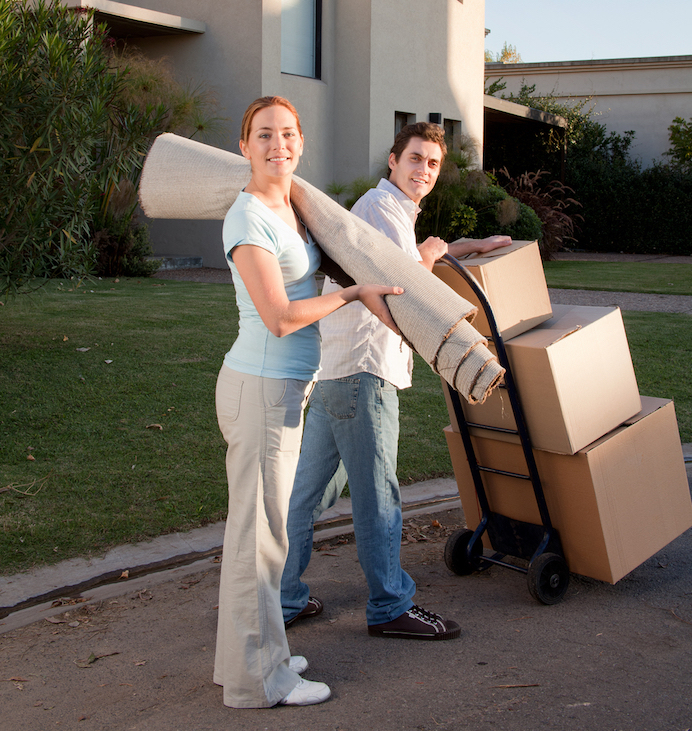Table of Contents
Moving is a marathon, not a sprint. You’ll need all of your energy stores to make it through the day, and some careful planning to keep safety risks at bay. Making a plan is the best start. Planning means assessing your home, the belongings that you’ll pack and carry, and your physical condition before the big day arrives.
Injuries can come from out of nowhere, so there’s no foolproof way to completely prevent them. But here are 4 common issues to watch out for, and ways to reduce the likelihood that you’ll need the first aid kit or a trip to the E.R.
#1: You’ll Do a Lot of Walking, so Wear Comfortable Shoes
The distance between your front door and the back of a moving truck or pod might not be very far. But by the time you’re finished loading up all of your things, you’ll feel like you’ve run a marathon. Steps add up fast, so protect your feet with comfortable shoes that have a supportive sole.
It might be tempting to wear flip flops or any old slip-ons shoes that you have lying around. But open toes are a big no-no. If you drop a box, bed frame or anything else, you might spend the rest of the move with your foot bandaged up.

#2: Don’t Let Bulky, Heavy Items Take Their Toll on Your Back
Lift with your knees, not your back. You’ve heard it before, and moving day will prove that it’s still some of the best advice that you can get. It might seem simpler to just bend over and grab a box. But even a lighter-weight box can strain your muscles, especially after you’ve lifted dozens.
A dolly can help with all of the stress that your body undergoes during a move. Instead of carrying one box at a time or stacking them up and teetering down the sidewalk, you can stack, tilt and roll several boxes at the same time with less effort than it takes to carry one. Watch out for awkward pieces, too, such as rugs. Some of them are a lot heavier than they look.
#3 Eat Healthy Meals and Stay Hydrated
Moving day might bring more activity than you’ve had in a while. Most people get up early and don’t finish until suppertime or later. Your body will have a lot of demands in between, so feed it well and don’t forget to stay hydrated. Start with a great energy-building breakfast, and keep healthy snacks on hand.
Central Washington University says sports drinks help replace glycogen stores, which means your muscles won’t feel as tired and sore as quickly. But drink water throughout the day, too, especially you’re moving in warm weather.
#4 Watch Your Step on Stairs to Prevent a Tumble
It’s hard to know where you’re going if you’re carrying a big box, TV or anything else that obstructs your view. When it comes to stairs, seeing is pretty important. One false step and you could land at the bottom in a heap with a shattered television set, twisted ankle and a broken spirit for your trouble.
Safety on stairs and any steps in front of your home means removing obstacles, making sure shoes stay tied and carrying loads that you can handle. For oversized household goods, enlist a partner to help.
Moving day is one of the most physically demanding times that many people face, and a lot can go wrong. Even if you go to the gym regularly, chances are your endurance training is no match for carrying and loading boxes and furniture nonstop from sunup to sundown. And then lucky you, you get to unload it all over again at your new home. That’s a perfect recipe for injury.
Get a good night’s sleep before the move. According to WorkSafeBC, fatigue does more than make you feel lousy. In addition to injury, WorkPlaceBC says being overtired can impair your judgment, increase stress and reduce productivity. But you could avoid a lot of these issues altogether by hiring a mover to pack and load your home for you. Find a moving company with Mover Junction today and make your relocation simpler and a lot less risky.

